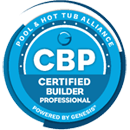ABC's of Cement
Sub-Base – Ensure the Quality and Artistry Endures
One of the first things to consider in creating long-lasting concrete artistry is the sub-base, which is the surface beneath the concrete. This area must be firm enough to withstand the weight of both the concrete and all loads in addition to the concrete encountered throughout its lifetime to prevent settling. Settling is one of the most common causes of cracks and other undesirable results which typically occur well after the project is complete, but sometimes may take place within days or months after the project. To install concrete that will stand the test of time, any soft, “spongy”, or weak organic materials must be disposed of and filled with stone, which is then compacted to achieve maximum strength, stability and integrity.
Concrete Reinforcement - Increase Stability and Integrity
We will now discuss reinforcing our concrete to ensure its structural integrity. This is a simple concept designed to hold the concrete together and distribute or share the load more evenly. In most cases rebar or wire mesh is the standard. However, with Paradigm Concrete Design we add Fiber Mesh, which is fiber reinforcement thoroughly tumbled throughout the concrete to become an integral part of the concrete mix. This is a highly effective form of concrete reinforcement that helps provide long-lasting stability and endurance to your concrete surfaces.
In instances where Paradigm Concrete Design is installing new concrete adjacent to existing concrete, we drill into the existing concrete across the span of the concrete at the center point of the thickness, and insert rebar dowels to eliminate heaving. This is a proven method to best ensure the concrete surfaces remain level and together instead of lowering or rising and separating over time. This is very important in regions such as the Ohio Valley, where concrete undergoes the effects of all four seasons from extreme heat to prolonged freezing of ice and snow.
Concrete Mix – The Right Mix for Your Project
The concrete mix works hand in hand with the reinforcement. The oncrete mix varies in the size of aggregate, the amount of cement, and types of additives. Residential concrete can be narrowed down to a handful of mixes which are; 3500 PSI, 4000 PSI, exposed aggregate mix, and stamped concrete mix. The number within “3500 PSI” and “4000 PSI” denotes the amount of cement in the mix and PSI is the acronym for pounds per square inch. Since the greater number means greater strength it can be simple to understand the concept. A 3500 PSI mix will reach its full cure 3500 pounds per square inch within 28 days.
Common Uses - 3500 may be used in sidewalk or patio areas with lightweight traffic, driveways, garage slabs a 4000 mix will be used. Paradigm concrete design recommends a 7-day wait period before driving on any new driveway and two days for any foot traffic. Exposed or stamped mixes are mixes where the aggregate river rock is substituted from crushed stone.
Joint Placement – Planning for Long-Term Integrity and Safety
Although concrete expands and contracts with changes in moisture and temperature the general overall tendency is to shrink and, therefore, crack. This is normal and expected in all cases. Prevention of irregular cracks, which are unattractive and difficult to maintain is achieved by simply pre-planning cracks by adding joints. In other words by placing the joints in the right places you have an active role in planning and deciding where and how it will crack such as a straight line crack instead of a random crack. This allows you to maintain long-term structural and aesthetic integrity and safety.
Whether you're a novice or a pro, we've covered the essentials to empower your concrete endeavors. Ready to bring your visions to life? Contact Paradigm Concrete Design at 502-751-0779 for expert guidance. Alternatively, fill out our online form, and we'll reach out to understand your requirements. Let's turn your ideas into concrete reality!






